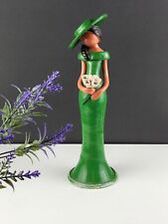#dominican dolls
Text
Randomly remembered that one time an art teacher deducted points on my piece because it was lazy that I didn’t add a face when that was the point because I was inspired by these faceless statuettes my grandmother gifted me.
#it was from one of her trips to the Dominican Republic#she told me it’s a cultural thing meant to represent beauty being more than just your face#I don’t know if that’s just a granny story or not but she does have faceless dolls and statues too so I’m inclined to believe her
9 notes
·
View notes
Text

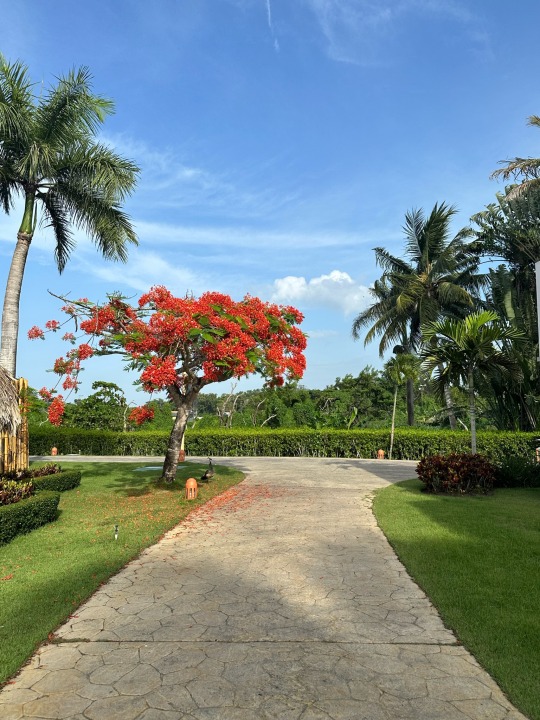
the bitterness of winter has me yearning for the warmth of the sun. i miss her. i hope she’s alright.
#my photos#girlblogging#seasonal depressive disorder#if there’s no snow it shouldn’t be this damn cold#love nyc but fuck#nyc#nyc doll#dominican republic
3 notes
·
View notes
Text
:D her again
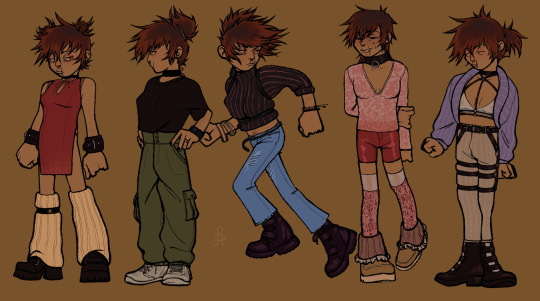
#myart#the other one is pending cuz i remember ill have to do Belts. rip.#i litchrally dont remember how to do ocs anymore theyre just dressup dolls to me now. sad!#dominican artists#artistas dominicanos#fashion
10 notes
·
View notes
Note
Percy's version of lingerie would be a sports bra. A tank top even. She strikes me as a practical girl first and foremost. Percy doesn't strike me as a person who really cares for delicate fancy things - especially considering her upbringing. She likes girly stuff, but I don't her enjoying too much lingerie. It's like how she loves the sea, but wouldn't particularly want to decorate herself in it. I'm not sure how to put it into words, but Percy appreciates the sea and it's power - similar to how Piper feels about love, and its power.
YES YOU'RE SO RIGHT AS ALWAYS YOUR PJO TAKES ARE SO GOOD And the comparison is perfect too,because Piper and Aphrodite's feelings on eachother parallel Percy and Poseidon's!And for Percy's brand of femininity,i want to add on that she's the specific kind of femme who subverts cishet people's idea of femininity.Blues instead of pinks,punk instead of traditional with the exception of loving her afro-dominican heritage,Team Mom instead of an 'overbearing no fun nag' stereotype,interests in kiddy and cutesy things instead of focusing on what's 'normal',high standards for men because she knows her self-worth and a very low interest in anything sexual or romantic.She's autistic and giving aroaceflux bi vibes and the closest thing to a standard girl thing she has is liking being called 'Doll' and even then she lets exactly two people call her that and it's Sally and her boyfriend(who varies depending on my mood).Oh and before i forget,i should note that i'm almost certain the person who suggested her in that corset didn't even headcanon her as transfem like we do😭This is not invalidating your points but me saying it's wild asf how the fandom will feminize Percy to be horny about her but balks at her actually being a woman
#twinklelight27#percy jackson#persephone jackson#trans percy jackson#transfem percy jackson#black percy#latino percy#pastel punk percy jackson#team mom percy jackson#bi percy jackson#aroace percy jackson#autistic percy jackson#percy jackson x black!reader#percy jackson smut#sally jackson#poseidon(derogatory)#la familia jackson#pjo books#< just so nobody jumps me because they somehow think i'm talking about walker#jercy#cartercy#margercy#valson#percethan#💌#askies
96 notes
·
View notes
Text
hello american girl doll tumblr community
i have decided to prematurely introduce myself despite not currently owning any dolls 💀 because i want mutuals!!
i’m cece, i’m 20, and im from the dominican republic :) (también hablo español)
as one does, i originally got into american girl at age 8, just in time to request a “my american girl #25” for my 9th birthday. truly a time in my life. as things go tho i grew up and at around 15 years old my mother asked me if id be interested in gifting my american girl stuff to a friend’s daughter and i said yes of course, and me and my doll parted ways
however i am now 20 years old i’ve recently gotten back into ag, this time specifically into the ag historical line! i’m so obsessed with the characters, their stories, the period clothing and accessories. i’m so devastated they’re archived so much of their furniture, it’s such a crime.
i am currently in the process of reading all the historical girls’ books (maybe not all of them, but most of them)
i wouldn’t describe myself as an aspiring collector. dolls are expensive and i don’t really want to have a hobby that revolves around buying stuff. plus i don’t think i’d have use for just, a bunch of dolls. i think ideally id have a maximum of 4-5 dolls
currently my favorites are: kaya, kirsten, addy, samantha, rebecca, and kit! though i trust this list will change and grow as i read through the books
anyways, please follow me/reblog if you wanna be mutuals. i emphasized that i mostly love the historical girls but id love to have mutuals who have other preferences as well :)
67 notes
·
View notes
Text
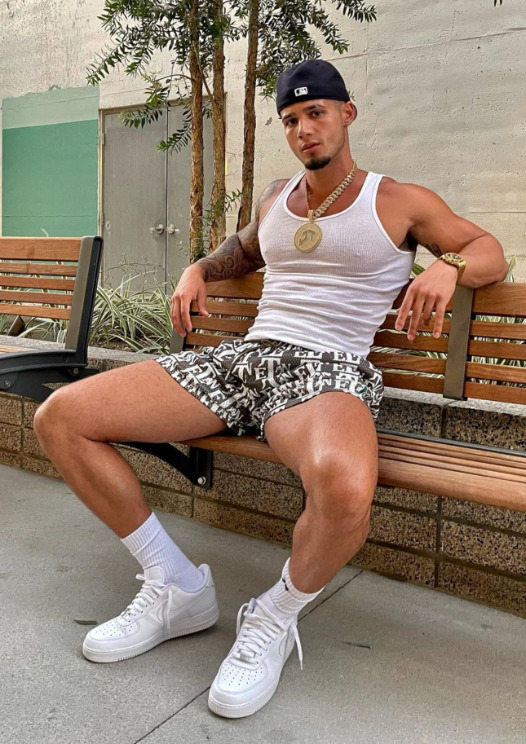
Whenever George went on vacation to the Dominican Republic, he felt he had missed his youth. He saw the young people having fun, partying into the night. He had gone through school and university at high speed with great success, had made a career as a lawyer, and could now stop working in his early 50s without any problem. He could live a nice life here or anywhere on the planet. Every time he sat in a sidewalk café in Santo Domingo, he took it upon himself to do so. And then packed his bags again after two weeks and flew back to Chicago.
George walked through the street markets. He saw all the fake sports jerseys, the fake sneakers, the fake gold jewelry. What he wouldn't give right now to be sitting on the beach or at a bus stop with other chaps in those clothes, drinking a beer and whistling at girls. Sure, he actually was into lads, but that was another one of his big life lies. And so he had remained single and a virgin all his life. Oh, what the hell, he thought. I can take a necklace like that with me sometime. Might make jerking off in front of the mirror more fun.
He bought one of the swanky chains and picked up another cheap fake gold-colored Rolex. Actually silly, he could have bought everything in real. But to feel like a little Latino gangster, this watch was better. He didn't have to take it home, maybe the maid would be happy if he left everything in the room. George put on the chain and watch and walked around the city a bit more, enjoying the hustle and bustle of the streets. And then at some point made his way to the hotel to freshen up before dinner.
The watch and chain didn't go with his dark blue suit, of course. But he liked to be well dressed for dinner. Even though the hotel was mainly frequented by newly rich Russians and Arabs, he didn't want to make an exception. He had carefully hidden the chain and watch under his shirt; the feeling of the large pendant resting on his chest was enough for him. And after dinner, he stood naked, with only the watch and chain, in front of the bathroom mirror and jerked off.
He had even slept with the watch and chain on. When he got up, everything felt so heavy. He examined the watch more closely. Actually, it looked perfect. And weighed heavy, too. Was it perhaps not a fake at all. He was also unsure about the necklace. Had he perhaps bought stolen goods…? Anyway, he was well rested and rested. And he could see that when he looked in the mirror. He had not looked so refreshed for a long time. And he had gotten color. On his tanned skin, the gold chain looked even better.
George didn't even take off his new jewelry to shower. And the white shirt was unbuttoned so much today that you could see the chain flashing. He also left the cuffs of the shirt open. The white shirt, the beige shorts, the gold jewelry. There was almost something southern about him, he had to think with a grin. The fact that he ordered his banana pancakes in Spanish and wished the Russian Barbie doll a good morning in her native language didn't even occur to him. George slept away most of the day at the pool. Every now and then, when it got too hot for him, he jumped into the cool water and took a few laps. The admiring looks of the one or other lady at the edge of the pool, when he catapulted himself wet out of the pool, he did not notice at all. Instead, he exchanged more frequent and intense glances with the pool boy.
He signed off for dinner at the hotel. He wasn't in the mood for a five-course dinner today. He was more in the mood for some street food, a few beers and whatever else came along. He didn't even remember packing a black satin shirt. But with black suit pants and black loafers, he looked very handsome. George combed his hair back with lots of wet gel. And he threw himself into the nightlife.
It had been daylight by the time George had gotten back to the hotel. If he remembered correctly, he had gotten another beer from the concierge. Other than that, he couldn't remember much. It was much too late for breakfast when he was finally awake. So he pulled right on swim shorts and a bright red shirt, which he left open. He was proud to still have such an impressive six-pack in his early 40s. Everyone was allowed to see that. The pool boy had reserved him the daybed right next to the artificial waterfall. That was perfect for discreet conversations. George had also used the evening to stock up on enough drugs for his customers here at the hotel. The staff, of course, knew what would happen if a busty blonde, a hairy Russian, or an Arabian stud joined George on the bed and the curtains were drawn. There could be sex involved. But in any case, money was exchanged for drugs. And a good portion of the money went into the pockets of the hotel staff. So people smiled. And kept quiet.
George spent the evening on Santo Domingo's Malecón. Getting supplies. And supplying customers in the casinos. George himself never gambled. Nor did he take drugs. He needed a clear mind and a functioning body for his job.
Jorge woke up in his permanent suite at the very top of the Catalonia. The view of the sea was fantastic. His breakfast was set. His personal trainer was already waiting in the hotel's gym. Yesterday had been a successful evening, so before he moved into his poolside "office," he needed fresh stuff. He awaited his supplier on the bench at the back entrance of the hotel. They were usually undisturbed here at this time of day.
It had all been over a year now. The Catalonia was now only occasionally his workplace. Jorge had gotten himself a warehouse in the old town, where he officially sells cheap souvenirs for the street vendors. In fact, he managed his drug mules from here. Personally, he only served the particularly important customers. Or the particularly horny.

Realized at the request of @axeegliter. No idea why my chat is down, bro. But I'm working on it!
And a bow to
and
You are two of the most handsome fellas I know.
197 notes
·
View notes
Text
A collection of things in The Owl House season 3 that makes this Dominican/American blob of a person happy to see:

The Dominican flag behind Gus and those decorations around it. You can buy those as souvenirs and some people sell them hand made as well!
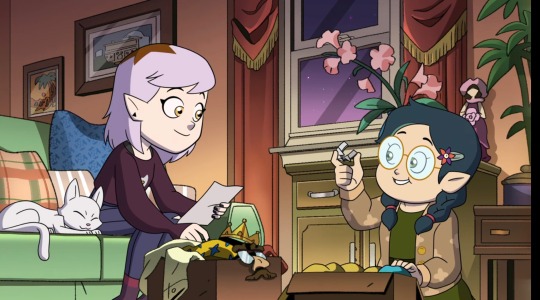
The Gifina dolls behind Willow! I used to love these dolls as a kid because they were cute to me (even though some people find them creepy). They're usually made of clay and are very delicate so you have to wrap them extra well if planning on bringing them back with you.
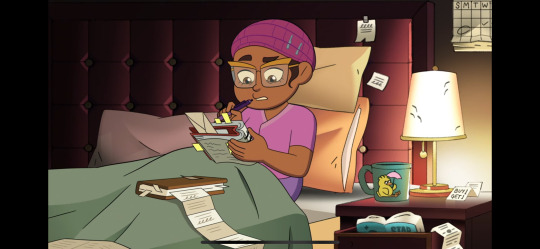
Camilla's hair wrap! Almost every woman in my family has slept in/gone out with their hair in these wraps. It's kinda like a combination of a bonnet and a cap to keep hair as smooth as possible. Hair is usually wrapped around your head in sections and secured with Bobby pins!
Speaking of hair...

Luz's pigtails! My own mother used to tie my hair in these styles with pink hair lotion. Sometimes it was in four sections sometimes three. It kept my hair protected and she used to put little hair ties with these kind of marble things at the end that made a very satisfying clink clink sound every time I walked.
#the owl house#toh#the owl house season 3#the owl house season three spoilers#toh s3 spoilers#the owl house season 3 spoilers#Dominican tag
72 notes
·
View notes
Text
The Mystery Of La Madama. With Altar Set-up And Offering

A peculiar figure has recently become very popular in Rootwork. This person is La Madama. As you look around on different websites, or online blogs about rootwork or hoodoo you find more and more people are speaking on La Madama. But the conversation on her has become more misunderstood and that people are just repeating the same misinformation they are getting from websites and blogs and I'm no way a expert on her but I talked to some priest and practitioners in Espiritismo so I'm writing this post for the people who may be interested in La Madama or just want to learn about how to work with this type of spirit.
Who is La Madama? (Let's say, Who ARE Las Madamas?) Well, what she is not is part of hoodoo nor a hoodoo Saint as it is written online. She is not a slave women. These are dolls that are made out of porcelain or plastic and dressed in a particular color and this is a misconception that it's a specific spirit. This is totally incorrect. A Madama is a category of spirits - to which many individual spirits and guides belong to.

Again the question is who is she? Madamas are spirits of the dead, spirit guides that were slave women (or the descendants of slaves) round in stature, who has the stereotypical look of a house servant from the 1800's. Now Madamas are NOT conjure women (as in false American root workers what have you believe). La Madama isn't considered a the patron of playing card readers and bone readers or divination at least in hoodoo. Madama originated in the Latin community I believe Cuba not the US. These women are typically either women who practiced Espiritismo and maybe Santeria. When these Cuban and Puerto Rican women were alive they are depicted wearing gingham skirts (aprons) in the colors of the spirit which they worked with (red gingham for Chango or Siete Rayos, Blue gingham for Yemaya or Madre de Agua, etc.) They usually have their hair wrapped and there clothing in the same color. There are countless "Madama" spirits out there and they are NOT just one spirit.
Where did Madama Spirits come from? These spirits comes from the latino countries lik (Cuba, Puerto Rico, the Dominican Republic) and has spread to many other countries including Venezuela, part of Mexico and even the southern parts of The United States and This type of spiritualism works differently than the more formal "white table" version of spiritism found in Europe in the late 1800's. There have many categories of spirits including (but not limited to): Madamas, Indians, Gypsies, Nuns, Arabs, and even Pirates. There is not ONE spirit of La Madama, just like there is not ONE spirit of The Indian, nor is there ONE spirit of the Gypsy.
La Madama type spirits is NOT native to Rootwork and has actually never ever been a part of Hoodoo at all until maybe the last 15 to 30 years.
In the south southern root workers used other spirit's such as (Black Hawk) or other spirits or not native to hoodoo but were only found in Spiritualist Churches in the south and some would argue and I read that Christianity, praying the psalms and working with Saints, Indian Spirits, etc. is a rather new to Hoodoo that's incorrect hoodoo in the south has all ways use Christian prayers and Psalms in their practice. The spirit like Black Hawk plays a part later because of what he did and what he represents to us the south especially in Louisiana. Just like Marie laveau these spirits in the South like Louisiana has become important to us, and has become a part of our practice. (See post on Black Hawk)
Can I Work With "La Madama"? This is an interesting question. The answer isn't that simple. It isn't whether you CAN work with La Madama -because you can, The question actually should be "Do I have a Madama to work with me?" In (Spiritism), you don't go out seeking spirits to work with. Instead, you work with the spirits in your Spiritual Court that already surrounds you. The Spiritual Court is a group of the most intimate guiding spirits you have around you that protect and teach you. They are your "inner court" and they defend you when you cannot defend yourself. They guide you, teach you and inspire you. Each person's Spiritual Court is different than the next's. Similar to being initiated in Vodou we get our loa who wants to work with us and be a guide to that person we don't pick or choose which. Madama is the same you must have your own already in your court and a medium can help with identifying your spirits on your court.
Before you can work with her. "Madama" type spirits you need to find out IF THERE IS ONE IN YOUR SPIRITUAL COURT! This is the most crucial element that people don't take into account. You must first find out if you have such a spirit in your court with which to work and identify who is there for you. You can then work with to strengthen your relationship with those guides through prayer, meditation and contact with these spirits at your Spiritual Altar.
It is up to each person to learn as much as they can about their Spiritual Court. These spirits will act as the conduit for divine inspiration and guidance for that person. If you have a Madama type spirit you would need to find out where she's from, her name, what she practiced in her life and how to work with her.
Working and Petitioning La Madama: I would often see photos of people putting offerings to La Madama and petitioning her as if she was a saint. This is absolutely incorrect. She is not. This is not the manner in which Spiritists would ever work with a Madama-type spirit. Because there are many of her so who are you praying too exactly.

Not my photo
Setting up an altar to La Madama: people like to have depiction of her on their altar, like a statue, picture, doll or prayer card. This object acts as a physical container in which her spirit can manifest so when you call opon her for guidance and support. What a glass of water.
Making offerings to La Madama: Madamas enjoy receiving offerings thanking them for their assistance. This could be bouquets of flowers or a cup of coffee or a cigar. If you do leave her offerings, they are offerings of gratitude. Remember she's not a saint. These are given because she came through and helped you with an issue or to keep your connection with her strong.
Ultimately she will help you with reading, perceiving and psychic abilities as well as giving you inspiration when you do a spell or ritual. After all, she was a priestess in her time and knows how to work spells, (but she will tell you how to do it HER way, not the Hoodoo way) (because she was not a conjure woman, she was an Afro-Caribbean *spiritual worker).
One must understand very clearly that God is who we worship. A Madama-type spirit is not a saint to be petitioned. She is a spirit guide. She is there to give you guidance, inspire your spell work, guard you from harm, cleanse you when you pick up something nasty, and to be a teacher and mentor. You do not worship your teacher right so you would not worship La Madama.
If you don't have a Madama-type spirit in your Spiritual Court, that's fine and normal. You may have countless other spirits who are very powerful and close to you. But this internet fad of La Madama really needs to be handled with respect and people should have a better understanding so they don't waste their energy and money trying to petition a spirit that's not even accessible to them. Focus on the spirits that do surround you and keep those bonds strong, and you'll be much better off in the long run.
"Madama" is something originating from Latino countries, not the USA,
#La Madama#How is La Madama#Latina community#Madama spirits#Spirit Guides#like and/or reblog!#spiritual#google search#Altar#Petition la Madama#ask me stuff#follow my blog#african diasporic#african spirituality
31 notes
·
View notes
Text
Hi, I'm Camille. I'm Black Dominican-American and sometimes I make gifs. Here's things I've made & a PSA on my favorite things as of 2024:
TV Faves
Currently Watching: Industry, Battle of the Writers, Affair, Agatha All Along
The Get Down
Warrior Nun
Interview with the Vampire
Russian Doll
Reservation Dogs
Ramy
Good Omens
Watchmen
Andor
Loki
Gilmore Girls
The Midnight Gospel
Midnight Mass
Young Royals
Season 2 of Bridgerton (specifically)
Only Friends
Music Faves
Black women in general
Indie Hip Hop/Neo Soul
Reggaeton/Dembow/Afro-Beats
Beyoncé Giselle Knowles Carter
Solange
Franklin Ocean
Lorde
Aminé
Doechii
Rico
Amaarae
Tems
Chloe x Halle
Victoria Monet
Jazmine Sullivan
Nao
Little Mix
Movie Faves
Titanic
Pride & Prejudice
Atonement
Everything, Everywhere, All at Once
Snowpiercer
Your Name Engraved Herein
Crooklyn
The Handmaiden
Get Out
Nope
Chevalier
Brandy's Cinderella
Book Faves
All of James Baldwin, Toni Morrison, Akwaeke Emezi & Octavia Butler's works
Aristotle & Dante
Song of Achilles
Percy Jackson (& HOO)
Things I don't tolerate
Homophobia
Transphobia
Zionism
Celebrities with rape/assault charges
Rosalía, J Balvin, J Lo, racist White Latinos & White Spaniards in general
Beyoncé slander
Things I mildly dislike
Taylor Swift
#about me#Beyoncé#Solange#Frank Ocean#Lorde#Aminé#Doechii#Rico Nasty#Amaarae#Tems#Chloe x Halle#Victoria Monet#Jazmine Sullivan#Nao#Little Mix#The Get Down#Warrior Nun#Interview with the Vampire#Russian Doll#Reservation Dogs#Ramy#Good Omens#Watchmen#Andor#Loki#Gilmore Girls#The Midnight Gospel#Midnight Mass#Titanic#Pride & Prejudice
8 notes
·
View notes
Text
Don't get how 'Doll' became the most accepted Hobie usage nickname in shipping content.I mean he'd use it because it's british slang('Dolly')but as a main nickname?Eh,y'all do that with every popular male character and it got old with B*cky B*rnes so it dosen't seem like it's actually intended to be Hobs.Hobie acts like the kinda guy who'd call his s/o 'Babygirl' completely unironically and nonsexually and LOOKS like that kinda guy too-By which he's blackity black blackest of black.I'm not even from an english speaking country but i'm biracial afro-dominican and my male relatives on my dad's side call me the spanish equivalent platonically and so does my maternal aunt's husband who's also black like me.I don't think i've ever actually heard 'Nena'(Babygirl)used sexually irl sjshsjwywhf
#hmmm nonblacks are weird.but yeah hobie's a bbg kinda guy he's very sweet even if he's got attitude solutions(< not problems it solves them)#hobie brown#hobie is jamaican#autistic hobie brown#team dad hobie#transmasc hobie brown#unlabeled hobie brown#seapunk lover hobie#mama's boy hobie#hobie is a good boyfriend#hobie appreciation#gwen stacy#black gwen stacy#margo kess#margo tag#miles morales#pavitr prabhakar#gayatri singh#atsv#spiderman#ghostpunk#punkbyte#punkflower#chaipunk#laddoopunk#poly spiderband#trans gwen stacy#dreadhead miles#haitian margo#summerposting
42 notes
·
View notes
Text
another letter to her
My dearest
There’s much to tell you
But I can’t reach out, I have to keep my self respect.
It pains me so deeply
All I want is you, carefree in the passenger seat of my Porsche.
Drop the panoramic sunroof and let you stand up, and feel free.
I went to this shop by my place, it was so cool
Easiest $100 I ever spent
Got lots of cool stuff, vintage beetlejuice collectibles, a promotional item from when nightmare was coming to theatres, I got you some Sanrio earrings, within my delusions I hope I have the opportunity to give them to you.
I bought a chrome hearts necklace, it has 2 crosses on it.
Within my delusion I think it was meant for when we reunite, I give you one.
I’ve been spending a lot of time talking to the Lord. He helped me decide on where my head was at about that one topic we went back and forth about.
I wish you’d come to your senses.
The day prior, you begged and pleaded for me to stay, telling me how proud you are of me, how much you admire me.
The next day
A ghost
Leaves in the autumn wind.
Oh how I wish I got to share these memories with you.
Dominican was wonderful, if only I shared those beautiful mornings, as the sun rose upon our swim out pool.
I got so much cool stuff for Christmas, this crazy limited edition sally doll you’d love it.
I got some tattoo time to start my sleeve, I’ve shown you the reference before.
All coraline, Tim burton, oh man am I excited. I sit down with him on the 5th to plan. You’re gonna love it.
I found some vans I want to get us a matching pair of.
If only you weren’t so stubborn.
The way you’ve never had to fight for a thing in your life, yet all I know is to fight. You’re so quick to run, abandon, sweep under the rug. Oh the privilege. I pray every single day you come to your senses.
Until we meet again.
Siempre tuyo
tuyo para siempre
J
3 notes
·
View notes
Text
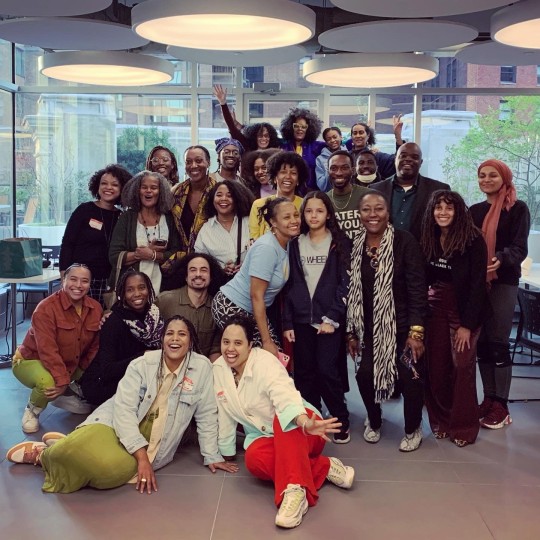
Beyond Borders: DLHM’s 2023 Nou Akoma Nou Sinèrji Haitian Dominican Transnational Film Festival
By Amanda M. Ortiz
February 16, 2024
Making my way to the midtown Manhattan location where the inaugural Dominicans Love Haitians Movement (DLHM)’s film festival was being held, I was unsure of what to expect but brimming with anticipation. That October morning was the picture of quintessential autumn in New York: crisp, clear, and characteristic of the onset of a season synonymous with new beginnings, all strikingly reflective of my own mindset heading into the three-day event. A labor of love for the organization, the Nou Akoma Nou Sinèrji Haitian Dominican Transnational Film Festival was to showcase a medley of primarily Dominican- and Haitian-helmed films all speaking to DLHM’s mission of fostering dialogue, enlightenment, and healing with regard to racism, anti-Blackness, genocide, colonization, and statelessness in present-day Dominican Republic and Haiti. And in its consistent approach to doing so through participatory art, storytelling, and performance events that both challenge and engage long-held biases, Nou Akoma Nou Sinèrji was DLHM’s latest undertaking in those efforts. The festival was fittingly taking place just one week following the anniversary of Hispaniola's 1937 genocide that ultimately drove a defining wedge between the island's two nations. And as though to further cement the relevance of DLHM’s mission, purpose, and the event’s overarching message, it also grievously coincided with the blitz of Israel's latest aggression against Palestine.
The very idea of such an event was an utter novelty. Although prevalent Dominican anti-Haitianism is well-known in both communities, the history of its origins (particularly among Dominicans) is not, and the contrast in that knowledge is stark. While generations of Haitians are aware of that history and the genocide’s grave ongoing ripple effects, dominant Dominican perception continues to be largely rooted in downplaying, outright denial, and widespread ignorance. And so, it was unsurprising that I had yet to come across any event that openly addressed that head on, much less one spearheaded by an entity or people of a Dominican background.
Historically, there have likewise been very few Dominican-authored works in English or Spanish that even mention the ethnic cleansing. My own introduction to it happened at 13 when I stumbled upon a work of literature that quite literally changed my life: Edwidge Danticat’s The Farming of Bones. In contrast to present day, at that time, there were sparse Dominican- or Haitian-authored works in circulation in English, let alone by members of the diaspora. Seeing myself or any semblance of my culture or lived experiences in print was virtually unheard of. And yet, it somehow did little to deter my younger self from continuing in my largely fruitless search. Coming across The Farming of Bones the year of its 1998 release changed all that. I was astounded by what I encountered in its pages, a history directly pertaining to me that I’d never heard of or about. For me, it triggered a bevy of emotions: confusion, rage, disgust, heartbreak. Those 312 pages lit a fire in me that would forever color my perception of even those I held dear and what I thought I once knew of my own culture.
It’s with this personal history that I stepped into the festival space that first day. While I didn’t necessarily think the sole focus would be the events of 1937, I attempted to brace myself for the stories and emotions sure to arise from the featured films. Upon arrival, I checked in at the front desk and received a program with a list of the films to be shown over the course of the ensuing three days. As I didn't see much of anyone milling about, I headed to the lower level where I was greeted by a table trimmed in palm fronds displaying an array of cloth dolls ranging in color from cream to carob and adorned in an assortment of vibrant fabrics. The featured description relayed that they were the product of the DLHM Black Doll Project launched in 2017, sending Black dolls to children in the Caribbean in an effort to affirm and empower them in their Blackness and Negritude.
Another table nearby was set up with ballpoint pens, a legal pad of white paper, and a folding chair, modestly decorated with a vase of magenta flowers and a sign encouraging passersby to “Write Yourself a Love Letter.” As I had no clear destination, I decided to sit and take the sign up on its invitation. I had all but finished just as Clarivel (we/us/you) was passing by. I had long been a social media follower and supporter of DLHM founder Clarivel Ruiz’s work since happening upon the organization online shortly following its inception. And though I naturally counted Clarivel’s presence at the event as a given, it never occurred to me I'd have the opportunity to meet, let alone interact with Clarivel personally.
A decades’ withheld revelation of Haitian ancestry by Clarivel’s father and the familial response that followed became the impetus for establishing DLHM. Since then, Clarivel’s journey with the organization they founded has not been without its risks and challenges due to unabating resistance and hostility that often surfaces when assuming a mantle of truth-telling. This has included cyberattacks and threats from Dominican ultranationalists, who have gone so far as posting Clarivel’s photo and encouraging others both locally and abroad to locate and harm them. Over time, attempts at intimidation, violence, and defamation only heighten the exacting nature of such work and can understandably take a toll, which resulted in Clarivel taking a prior temporary hiatus from DLHM and its initiatives.
In addition to activism, Clarivel is also an artist, an educator, a filmmaker, and an overall creator. And with a vitality that transcends space, Clarivel is an iconoclast with an intrepid commitment to DLHM’s underrepresented and largely silenced but vital cause. And so, meeting Clarivel in the flesh after years of admiration from afar was nothing short of a fangirl moment for me, which I unabashedly expressed along with gratitude for their continued work. And in the face of that effusiveness, the warm reception I received from Clarivel only added to my anticipation for what was to come.
Back upstairs, the film festival officially kicked off with opening remarks as the lights dimmed and the handful of audience members in attendance settled in for the first films: the short Daughter of the Sea and the documentary film Stateless. With breaks in between, those were followed by Colours in the Dust and Haiti Is a Nation of Artists. All were immersive experiences and presented themes of artistry, the aftermath of Haiti’s 2010 earthquake, spirituality, human rights abuses, politics, race, discrimination, and ancestry, to name but a few. There was even a virtual Q&A with the main subject of Stateless: activist, community organizer, lawyer, and asylee Rosa Iris Diendomi. By afternoon’s end, it was difficult to imagine that the festival’s subsequent days could hold a candle to the first, but there was, in fact, much more in store.
Day two’s roster included the shorts Forever Twins, Please in Spanish, Id, The One in The Mirror, Cotton Candy, Espíritus en Marcha, and Sisters By Water, and the full-length documentaries Jean Gentil, Chèche Lavi, How (Not) to Build a School in Haiti, and Massacre River: The Woman Without a Country. While the films offered thematic echoes of day one, they also rendered new ones: migration, belonging, identity, and division. In contrast to the day prior, some of the shorts (Please in Spanish, Id, Cotton Candy) even managed to incorporate humor into their more weighted topics. The day’s more sizable audience had the opportunity to engage in a number of in-person and virtual Q&A panel discussions with many of the films’ directors and creators, including Rulx Noel (Forever Twins), Bechir Sylvain (Id), Shenny De Los Angeles (Sisters By Water), MarQuerite Hamden (Espíritus en Marcha), Karlina Veras (The One in The Mirror), and Jacquil Constant (Haiti Is a Nation of Artists).
The day also included sessions outside of the panels in which audience members were collectively encouraged to share thoughts and impressions with regard to the films and their themes. These sessions became vulnerable spaces of palpable reflection, as some tearfully spoke to personal correlations while others expressed warranted indignation and confusion upon learning of such history and circumstances for the first time. The crowd ran the gamut of representation, with many from the Haitian and Dominican communities (like me and my beloved friend Nathalie, a Port-au-Prince native who was my faithful companion for the second and third days of the festival) and others with no ties whatsoever. This lent to an environment that all at once facilitated release for the former and enlightenment for the latter—an impactful scene to watch organically unfold. There was also generational diversity within the audience, with elders sharing invaluable lived experiences, including upbringings on Dominican bateyes and participation in birthright advocacy protests outside of the UN. And though I largely absorbed more than I spoke, similar to the previous day, a number of the films’ stories left me in tears that carried over to my train ride and arrival home, as I ruminated over the ongoing hardship faced by those at the center of many of the films’ stories and at the thought of those devoid of the opportunity to have their stories told or heard. I also mourned being unable to viably share that grief and outrage with members of my own family.
Day three, a Friday, was bittersweet, as it marked the end of the festival and a space that had become equal parts familiar and sacred. I greeted a number of now familiar faces by name, often with a smile and some even with hugs. In that way, the festival had fostered a level of intimacy among attendees. With the room nearly at capacity, many of the the previous two days’ films were replayed, along with the debut of Michèle Stephenson’s Elena and the impromptu additions of Oscar Grullón Cruz’s No me Llames Extranjero and Retrato Kiskey'ART/Yon pòtre Kiskey'ART.
Owing to kismet, Retrato Kiskey'ART/Yon pòtre Kiskey'ART turned out to be the perfect film with which to conclude the festival on the strength of its message of hope and solidarity. It featured the music of The Azueï Movement, a binational artistic collective that actively aims to promote a culture of peace between Haiti and Dominican Republic in both nations and abroad. The film featured the collective performing at locations on both sides of the island and the hurdles they often confront logistically, bureaucratically, and societally. Yet, it also highlighted a dynamic often overshadowed and believed to be all but nonexistent in the face of the ongoing injustice taking place: a desire from both sides for kinship and unity, strengthened by very real seeds being conscientiously sown. In essence, the film spoke to another path for the island being actively pursued for present and future generations. And fittingly, DLHM is also proof of this living ideal. The jubilant aura and infectious music of the film was a palpable breath of fresh air, with many audience members (myself included) dancing in their seats. That energized ambiance spilled over into the celebration that followed with the festival’s closing ceremonies, replete with food, music, and accolades of recognition for contributing filmmakers.
The festival for me was nothing short of a homecoming. For decades, I had been ineffectively attempting to speak to and enlighten others (including family members) of the genocide’s detrimental effects and the documented lengths to which the Dominican government has gone to keep its own people complicit and ignorant—an uphill battle I’ve felt alone in. I’ve faced consistent rebuff for this, even in spaces that purport to center and underscore such atrocities for the sake of prevention and accountability. My international affairs masters program at The New School turned out to be one such space.
In my final year, I had resolved to write my graduate thesis on the genocide and its ensuing effects through the lens of Haitian- and Dominican-authored historical fiction, given the general lack of official documentation. In the thesis workshop course I was required to take prior to submitting my official proposal, I faced startling resistance from the course’s Chinese-American professor, who not only seemed to have no knowledge of the atrocity or the current climate in Hispaniola, but no interest in learning of it. She dismissively declared my chosen topic “irrelevant” and instructed me to change it. Resolute in not being strong-armed into abandoning my topic, she threatened to fail me, which not only would have prevented me from formally submitting my proposal to the department but from completing the program altogether. After a semester of anguish, uncertainty, and incessant back-and-forth, in the end, she begrudgingly issued me a passing grade, which was likely the result of sheer fatigue from verbal sparring and just wanting me out of her hair. I would be interested to hear that same professor’s thoughts on the extant legislation passed by the Dominican government (TC-168-13) retroactively stripping Dominicans of Haitian descent of their citizenship in 2013, just one year after I graduated and
submitted my thesis. I wonder if, in light of such a blatant human rights violation, she would still deem it irrelevant.
Attending Nou Akoma Nou Sinèrji, I at long last felt seen and part of something bigger, a cohort with a concerted and pivotal mission. The birthed and directed films by my cultural brethren were ancestral echoes decrying the rampant injustice and affliction plaguing our island and the diaspora, especially ones that directly referenced the genocide and the disallowance of home (Stateless, Massacre River: The Woman Without a Country, and Elena).
My maternal grandmother’s line hails from Bánica, a hamlet on the Dominican-Haitian border that is a literal stone's throw between nations only separated by a river that many on either side still traverse daily for the purpose of commerce and livelihood. At the time of the genocide, my grandmother would have been nearly four years old and my great-grandmother (her mother) just 31. Their deaths in my earliest years have deprived me of their words and stories. I'll never know the inconceivable horrors they witnessed over the course of those six days and nights in October 1937, the neighbors, friends, and kin they saw cut down and violated around them. I’ll never know what they felt, how they feared for their own lives, how they managed to survive, or the ways they were no doubt haunted for the duration of their lives thereafter as a result of having lived. What I wouldn't give to be able to sit with and bring them my questions, to hear their firsthand accounts of that and so many other things. My younger self, so disturbed when first learning of the genocide on my own, would have found solace in their words by sheer virtue of the fact that they survived to tell of it. But lamentably, that defining part of my familial history and theirs is long buried with them. So, just as The Farming of Bones did for me all those years ago, the festival’s films provided me with pieces of that history directly linked to my own in the absence of my grandmothers’ actual voices.
The festival’s films vividly depicted a great deal of Dominican and Haitian existence, culture, and history, even history many wish remained and arduously work to keep buried. Each film is worthy of being seen and savored, not only in support of the artistry of the filmmaking and the teams that brought the stories to fruition, but also for the messages those stories impart. I walked away with many favorites, but most of all invigorated with a renewed resolve. And though the pool of people in my life truly capable of appreciating and understanding the depths of the festival’s indelible mark on me remains sadly limited, it hasn’t lessened its significance. Even this piece, written to celebrate much needed activism and the festival’s impact, I know will not be universally embraced or well received. Yet the very existence of such opposition is a testament to just how much that activism is truly needed.
What Clarivel and Dominicans Love Haitians Movement were able to achieve with the inaugural Nou Akoma Nou Sinèrji Haitian Dominican Transnational Film Festival is nothing short of remarkable. It’s a feat whose ultimate outcomes would have been impossible to forecast or orchestrate: a space of genuine vulnerability and healing; a celebration of Haitian and Dominican art, expression, and culture; a forum for candidly addressing injustice, genocide, and the resulting implications. I only anticipate the festival’s impact and reach to grow with each passing year, and I look forward to being in attendance to witness and celebrate that momentous achievement.
Amanda M. Ortiz is a NY-born-and-bred, first-generation Dominican writer. Pursuing degrees in international affairs and Latin American studies sparked a commitment to peacebuilding and remembrance initiatives in societies that have endured genocide (particularly Hispaniola) that has yet to diminish. Her writing is a space of candid cultural, ancestral, and personal reflection previously published by Dominican Writers Association and Spanglish Voces. In addition to Spanish, she is fluent in Portuguese with a deep love for Brasil. Her writing and creative journeys can be found and followed on Instagram: @amopalabras and Twitter: @amo_palabras
2 notes
·
View notes
Text
rtc headcannons part 2!!
Ricky: pan and genderqueer (any prns + neos), wore cat ears in middle school, keeps shipping the choir with each other, puts stickers on all their mobility aids, draws on their hands when bored, ADHD haver (ricky potts is many things, neurotypical is not one of them), listens to hatsune miku and lemon demon, lucid dreams a lot, besties with penny, really musically talented, colombian, dyslexic (still can read though! *cough* ocean *cough*), star trek game theory and fnaf fan, got noel into warrior cats briefly in middle school, emoticons emoticons emoticons!!!, hangs out with ocean at the library sometimes and they just read in silence the whole time, originally made zolar as a way to pass time during the 2-hour-long car rides to the hospital and it eventually became a form of escapism, fanfiction writer
Penny: lesbian and agender (they/she/it), autistic, her special interest is animals (specifically lions), love language is gift giving, collects little trinkets and gives them their friends, mostly sews her own clothes just because she can, its favorite song is daisy bell, keeps jane on her bed and it successfully freaks out everyone that goes into her room every time, braids oceans hair, really tall like 'almost mischas height' tall, plus sized, just stares at people sometimes (if 'people' ends up being mischa, it will turn into a multiple minute long staring contest), therapist of the group, the greenest eyes, karnaks favorite, didnt have eyes as jane just empty eye sockets, mitski fan, randomly picks up and carries ocean sometimes (air jail for the ginger >:]), really good at the violin despite being self taught, goes to the thrift store with ocean to look for old dolls while she buys clothes, has an entire wall of vintage crosses despite not being religious, cosplays and drags the choir to renfaire, loves studio ghibli, real name is peninnah, favorite ride is the carousel, cant type for shit, the only one that willingly volunteers to catsit for ricky
Constance: ace pan demigirl, (she/they) plus size, afro-dominican, kpop fan, really fucking strong from kneading dough her their whole life (that punch to the boob really must have hurt), made matching friendship bracelets for the choir, takes buzzfeed quizzes religiously, nailed it enjoyer, glues little rhinestones to her glasses, pinterest girlie, vocaloid and ABBA fan, boba enjoyer, loves barbie movies unironically, mom friend, carries sunscreen on them at all times during the summer so ocean doesnt get burnt to a crisp, brings left over baked goods from the cafe to lunch/choir practice, tbh shes probably the only reason ocean hasnt starved to death yet, fanfiction reader
#ride the cyclone#rtc#ricky potts#ricky rtc#penny lamb#penny rtc#jane doe rtc#constance blackwood#constance rtc#kal rambles!!
15 notes
·
View notes
Text
DIVERSITY DOES NOT AND SHOULD NOT EXIST EVERYWHERE
The African Diaspora Understands This - Everyone else doesn't
There has been much debate within the Vodou circles, which I am a member. The question still remains as of yesterday, “Can whites and people not of the African Diaspora practice Vodou, Ifá, Santeria, Candomblé, Palo, Umbanda, or even American Voodoo?” All which are African based spiritual systems? Of course people feel entitled to indulge in anything they are mildly interested in but there are times where certain people should be shut out of certain things and traditional African religion is certainly one of those things. When Jenn and I were in New Orleans in the French Quarters, I was really taken back at the number of Voodoo shops, Voodoo museums and Voodoo tours being spearheaded by whites. Not a single Voodoo entity was owned or operated by a black face. I was equally cynical of the amount of revenue that was being generated from factory manufactured, “Voodoo Dolls,” key chains, trinkets, gimmicky magic candles, and palm readings. All of which is NOT African in origin but marketed and sold as African culture. These Voodoo tourist shops were managed by young white Goths with black painted nails, gaged earlobes and multiple piercings and they were asking, ‘ME’ if I needed help finding something! Of course what I asked for (Ṣàngó Oṣè - the double axe of Shango), they didn’t carry because THAT was too authentically African and too authentically Vodou. Perhaps we should have ventured further away from the tourists traps of the Quarters.
This is why people who are not of the African Diaspora should respectfully be locked-out of our sacred traditions. Our traditions become exploited, commercialized and monetized. Our traditions are converted into storefronts for wide-eyed, clueless looking non-Africans to wonder in, fascinated by our strange and scary, “Ooga Booga” traditions, purchasing our culture as “gag gifts” and curious and unexplained pieces of art. But in Yorubaland Nigeria, in Benin, in Ghana, in Burkino Faso, in Cameroon, in Brasil, in Cuba, in Puerto Rico, in Haiti, in Jamaica and in the Dominican Republic, this sort of disrespect of African and Afro-Cubano spiritual practices does not exist. One individual of the Voodoo circle I spoke with believed that the religion should be open to anyone who is sincere about the culture and willing to honor the spirits. He also believed that its okay for white people to practice traditional African religions as long as they come with a sincere heart. Vodou is NOT like Christianity or Buddhism where anyone can just walk in and join. It’s not about your heart, it’s about your blood. It’s not the lack of sincerity to the Gods that is the issue, it’s the legacy of that group of people that is the problem. It’s the history of waging war on African people, in the past and in the present, whether you personally took part in it or not. Everyone in the world benefitted from the exploitation of African people. Therefore, any traditional spiritual system or religion that doesn't have set protocols of security and exclusion isn't worth joining. And the more ancient it is, the more exclusive it has to be.
This is why Vodou is a CLOSED spiritual system. Even for Africans, there are certain rites, initiations and rituals to open the spirits up to even us. Many of us aren’t even granted access to these powerful energies because many of us have turned our backs on our gods for white saviors and little porcelain skinned Cherubs with curly blonde hair. And for decades of forced conversation at the threat of being flogged and castrated, we accepted our enslaver's God and never looked back. Vodou is an ancient traditional African cosmological system that finds a lot of its essence in honoring the ancestors and serving the Loas. We call this “sevi lwa.” And since the Loas (African Vodou spirits) are not the ancestors of Europeans, white colonizers and the white oppressors of African people, there is no reason to believe that the African spirits would respond favorably to the petitions of the very people who conquered Africa and slaughtered the African people. The idea itself is not only absurd but extremely arrogant of people to treat African people with so much disdain and disrespect and then turn around and have the audacity to perform Vodou rituals (poorly) and ask African spirits to grant them love and wealth.
The skeleton key is a sacred symbol of Lwa Esu Elegbara (Elegguá) and for a good reason. A key locks and unlocks doors. “Legba’s Key” unlocks the spiritual realm and opens the road for African people to communicate with the 400+1 lwas or Orishas (if he allows it). He doesn’t always grant permission (it depends on your approach). But one thing is for sure, there can be no communication with any spirit without first consulting with this very ancient energy which we call, Elegbara. and this ancient energy DOES NOT grant access to non-African people who are not of the African bloodline. True Vodouisants understand this and therefore they refuse to teach non-African people our deep secrets and initiation rites.
Vodou is strictly an African religion and African identity and it belongs to the African Diaspora! Some things we will happily share; Music, food, dance and even some aspects of culture. However, traditional and sacred African spirituality we cannot. Diversity does not exist here. Respect that and try not to guilt your way in or bully your way in. You are not entitled to everyone's culture and knowledge. It's not for you.
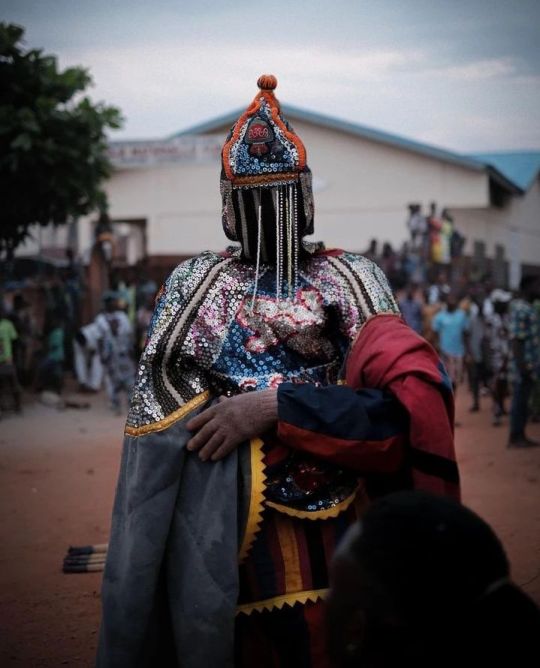
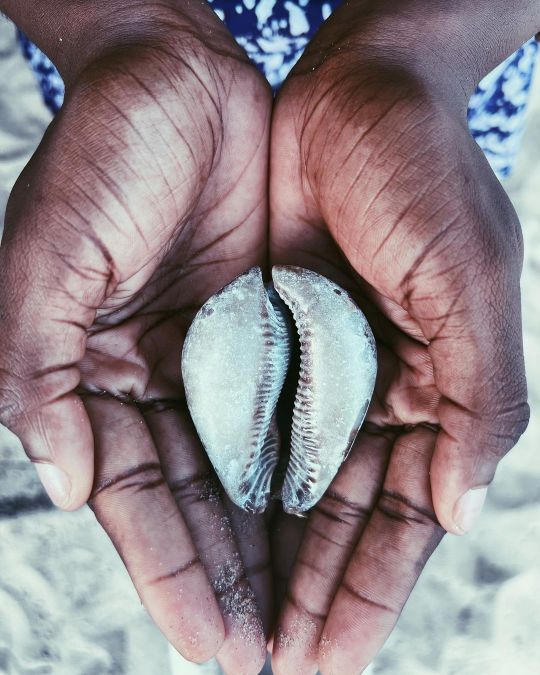
16 notes
·
View notes
